Devotion – Part 4: Italy
Chapter 13: Venice – The City - one of two
The name of the city of Venice comes from the ancient Venti people that inhabited the region by the 10th century BCE. Venice was a major financial and maritime power during the Middle Ages and the Renaissance and a staging area for the Crusades and the Battle Lepanto, a battle between fleets of the Catholic Christian states and the Ottoman Empire. Philip II of Spain and Venice were the main supplier of the Catholic ships. From the 13th through 17th centuries CE Venice was a center for commerce, especially silk, grain and spices. “The city-state of Venice is considered to have been the first real international financial center, emerging in the 9th century and reaching its greatest prominence in the 14th century.” – Oliver Coispeau
“Situated at the northwestern end of the Adriatic Sea, Venice lies on an archipelago in the crescent-shaped Laguna Veneta (Venice Lagoon), which stretches some 32 miles (51 km) from the reclaimed marshes of Jesolo in the north to the drained lands beyond Chioggia at the southern end. The shallow waters of the lagoon are protected by a line of sandbanks, or lidi, whose three gaps, or porti, allow passage of the 3-foot (1-metre) tides and the city’s maritime traffic. On the sandbanks are many small settlements, some of them centuries old. …
Today the administrative city, or comune, of Venice embraces the 90-mile (145-km) perimeter of the lagoon, taking in the urban and industrial areas of Mestre and Marghera and the Marco Polo International Airport at Tessera. The proportion of the population of the comune that lives in Venice itself has shrunk steadily. At the beginning of the 20th century the historic city centre contained three-fourths of the comune’s population, and at mid-century it still contained more than half. By the beginning of the 21st century that fraction had shrunk to less than one-fourth. … The lagoon has always been crucial to the survival of Venice. Its mud banks, shallows, and channels are a source of income from marine and bird life and from salt pans. The lagoon has served as protection (the Venetians defeated the Genoese in 1380 through their superior knowledge of the navigable channels) and as a natural sewerage system, with the tides flushing out the city’s canals twice daily.” – Encyclopedia Britanica
After the Napoleonic Wars and the The Congress of Vienna the republic was annexed by the Austrian Empire until it became part of the Kingdom of Italy in 1866. The Congress of Vienna of 1814–1815 “was one of the most important international conferences in European history. It remade Europe after the downfall of the French Emperor Napoleon I. It was a meeting of ambassadors of European states chaired by Austrian statesman Klemens von Metternich, and held in Vienna from November 1814 to June 1815. The objective of Congress was to provide a long-term peace plan for Europe by settling critical issues arising from the French Revolutionary Wars and the Napoleonic Wars.” – Wikipedia
In 2018, 260,897 people lived in the comune of Venice, of which 55,000 lived in the historical city. The metropolitan statistical area had 2.6 million residents. The historical city, pictured in the next three photos, is made up of 118 small islands connected by over 400 bridges. The first photo of a “false color” view from space is low resolution only. The second photo is from the International Space Station and the third an aerial photo. The backwards “S” cutting through the city is the Grand Canal.
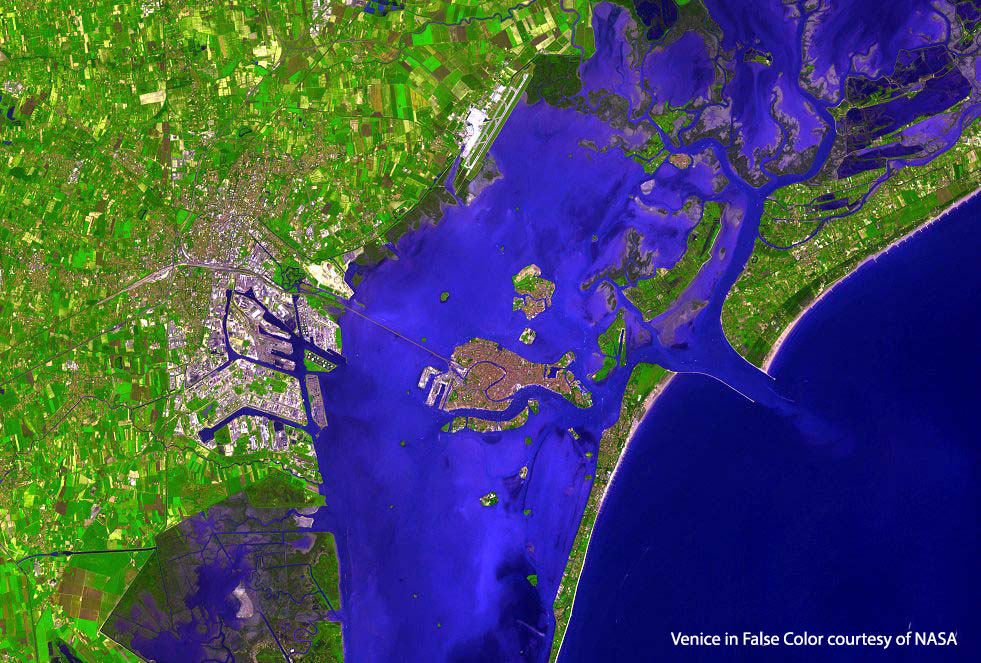
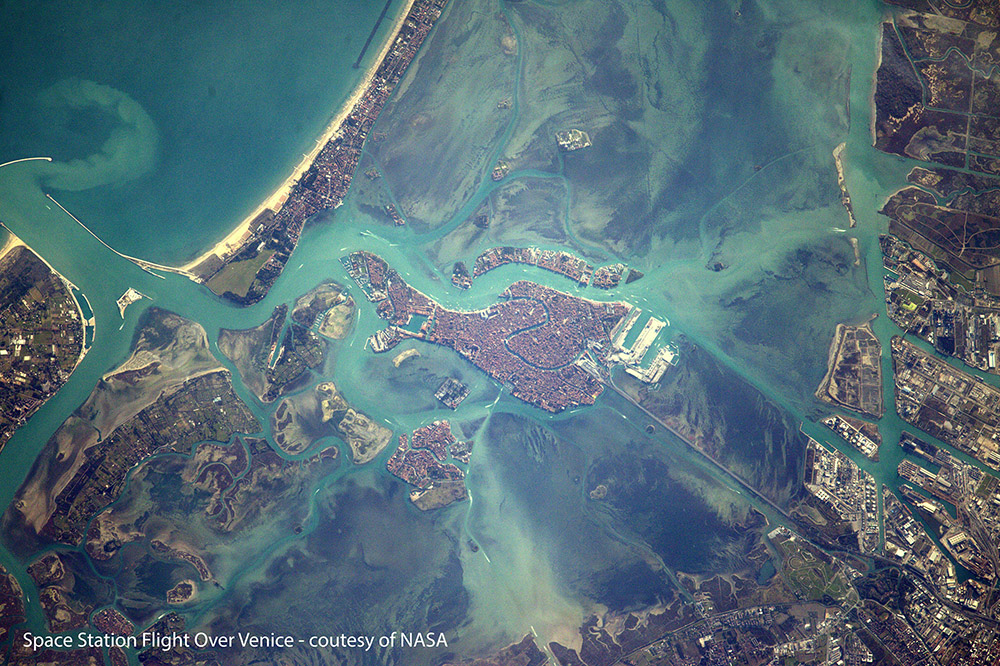
 LOW_1607874609.jpg)
Here are some elevated views of the Grand Canal.
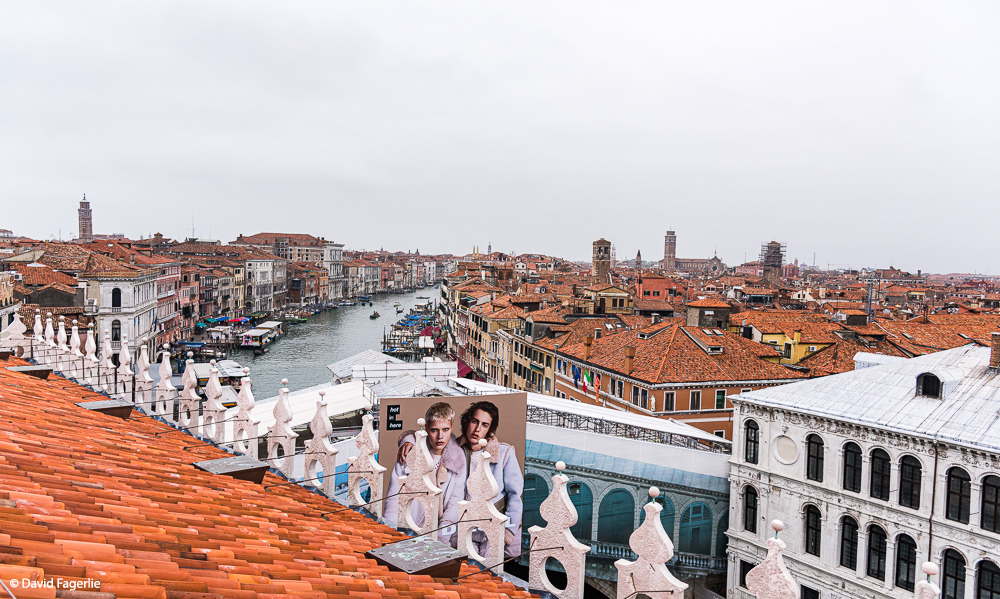
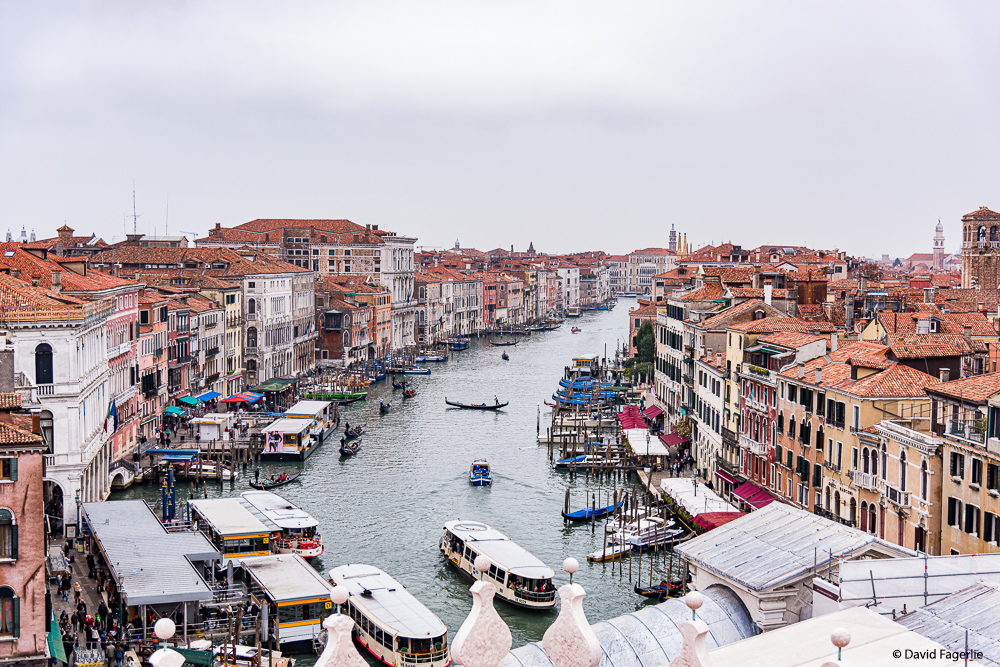

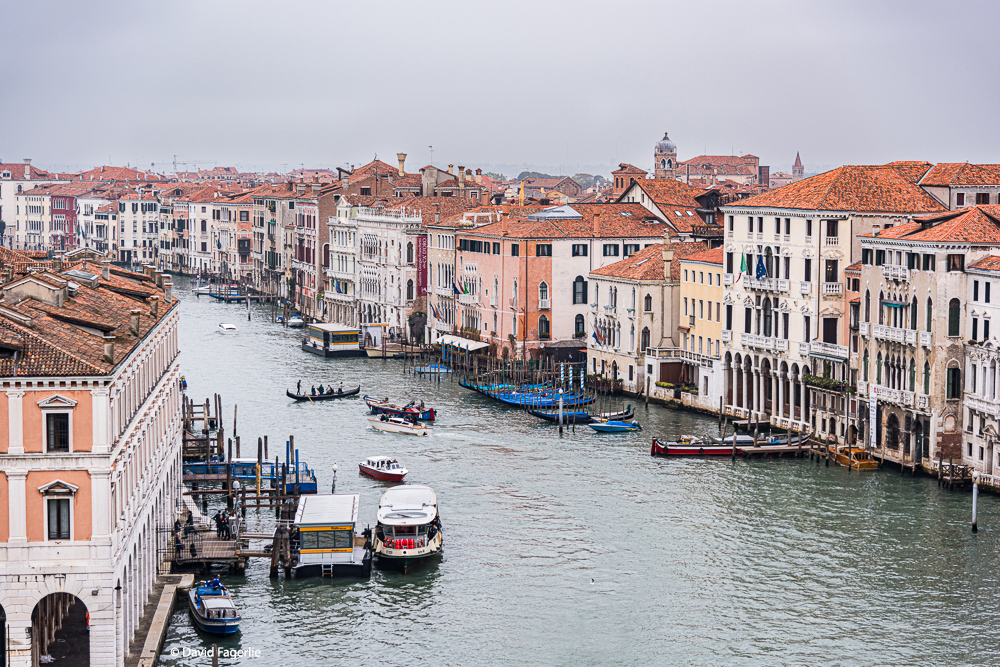
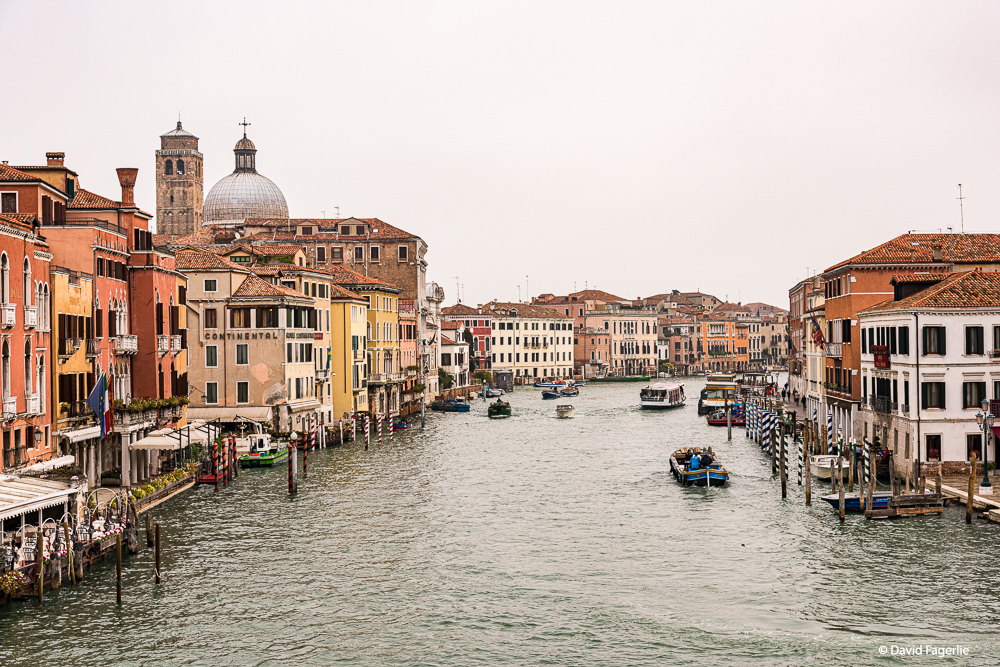
At sea level the intricate system of canals and historic buildings is mesmerizing. It is easy to see why Venetians are so concerned about sea level rise. They don’t need sophisticated instruments to tell them sea level rise is a reality and a threat.
“When the palazzos on the Grand Canal were built around the 16th century, the main sea level was below the first step, Giovanni Cecconi, the president of the Venice Resilience Lab, tells NBC News. Nowadays, the water is about 3 feet over it. Divide that by 500 years, and you'll get an average sea rise of up to half a feet per century.” – NBC News
“Venice has battled rising water levels since the fifth century. But today, the water seems to be winning. Several factors, both natural and man-made, cause Venice to flood about 100 times a year — usually from October until late winter — a phenomenon called the acqua alta.
I recently asked a Venetian how much the city is sinking. He said, 'Less than the sea is rising.' Venice sits atop sediments deposited at the ancient mouth of the Po River, which are still compacting and settling. Early industrial projects, such as offshore piers and the railroad bridge to the mainland, affected the sea floor and tidal cycles in ways that made the city more vulnerable to flooding. Twentieth-century industry worsened things by pumping out massive amounts of groundwater from the aquifer beneath the lagoon for nearly 50 years before the government stopped the practice in the 1970s. In the last century, Venice has sunk by about nine inches.
Meanwhile, the waters around Venice are rising, a phenomenon that's especially apparent in winter. The notorious acqua alta happens when an unusually high tide combines with strong sirocco winds and a storm. In November 1966 a huge storm (the same one that famously flooded Florence) raised Venice's water level to more than six feet above the norm.” – Rick Steves and Gene Openshaw
I would add that for a city three thousand years old a century is a short amount of time.
To see the above photos in higher-resolution and to take a sea-level tour of the canals and buildings that line their shores please click HERE.
Next Monday we explore more of the history and beauty of Venice. See you then.

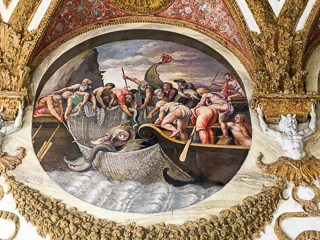
December 15, 2020
Chapter 14: Venice – The City – two of two
A short distance from the San Zaccaria ferry terminal near the Piazza San Marco, in the historic center of Venice, is the small island of San Giorgio Maggiore, located south of the main island group that makes up Venice.